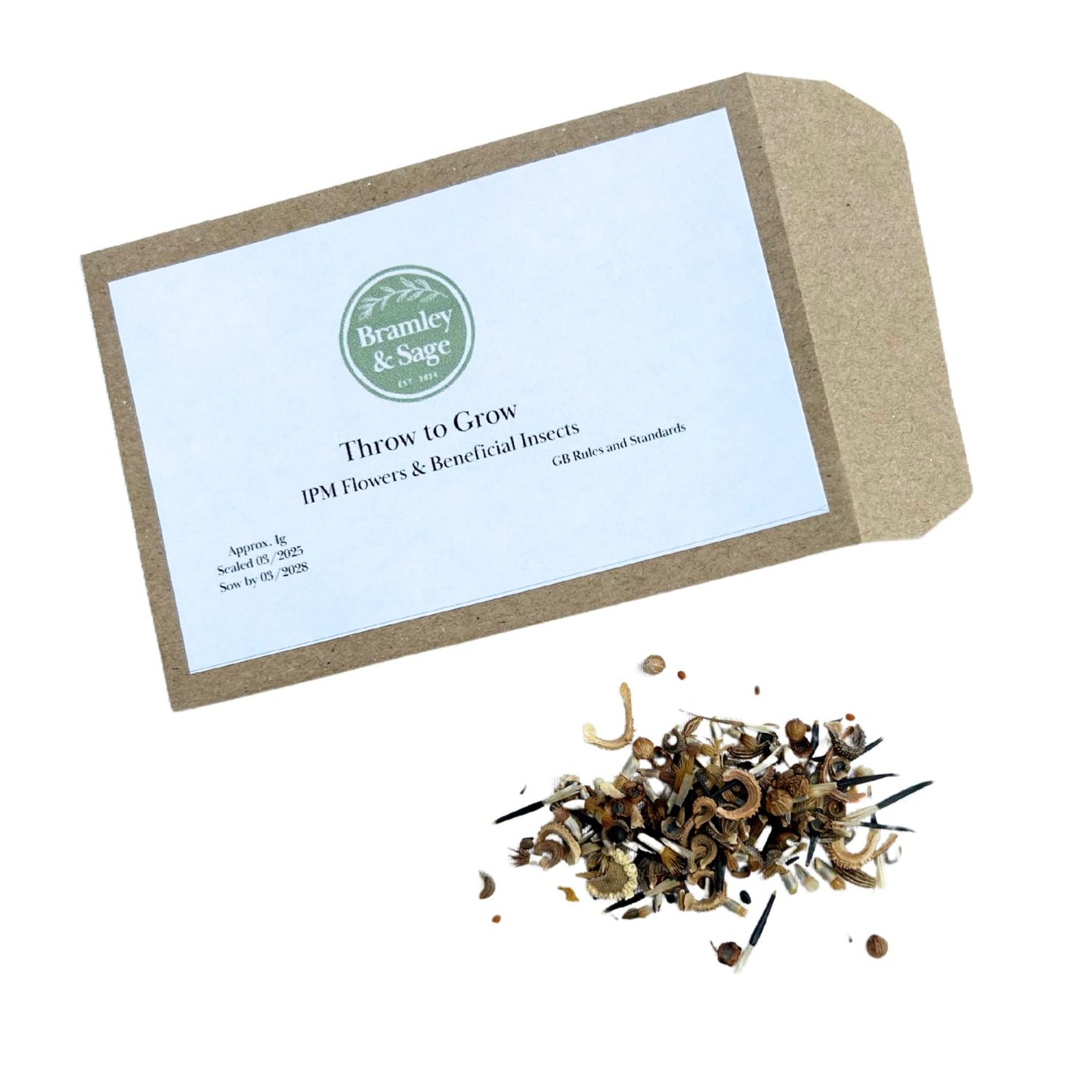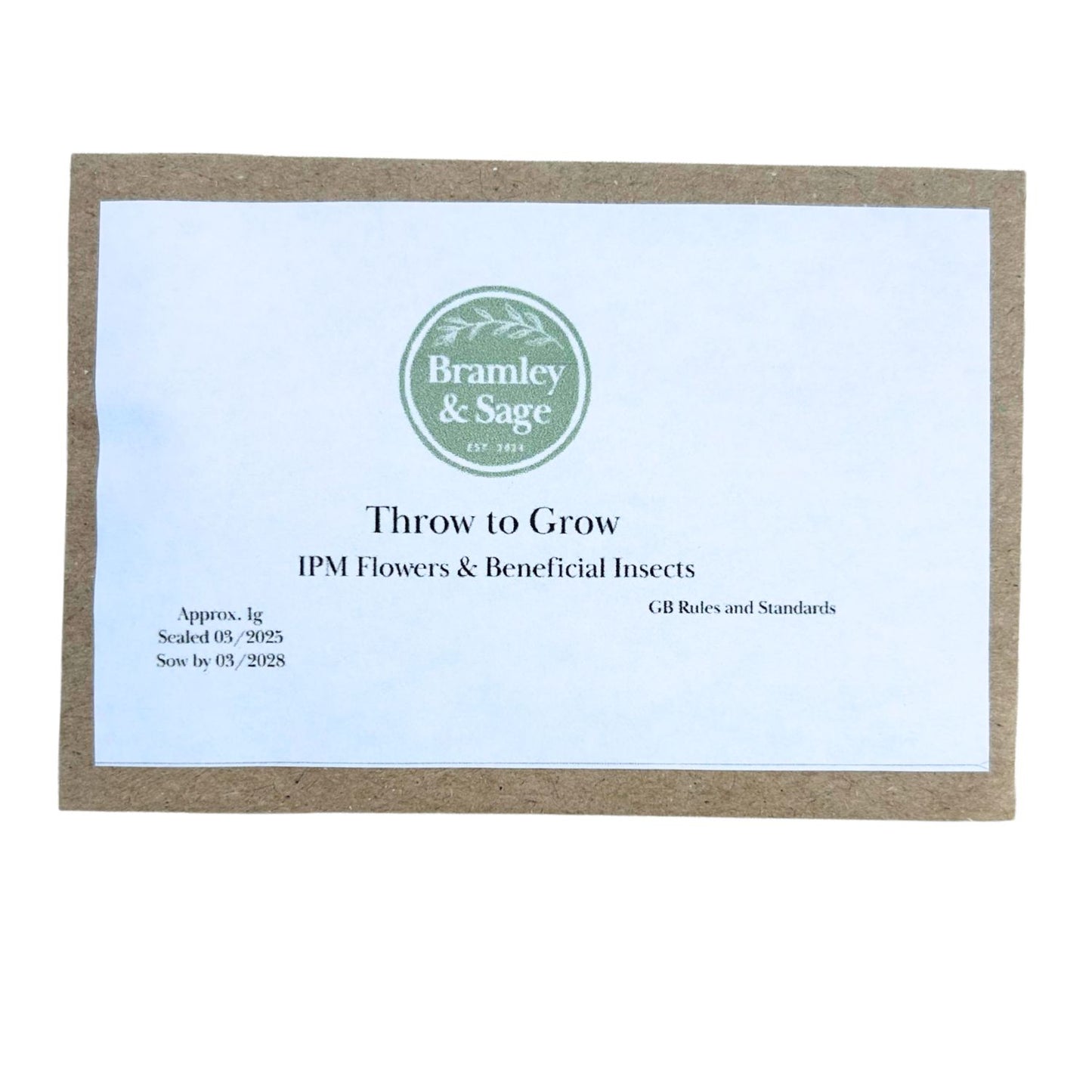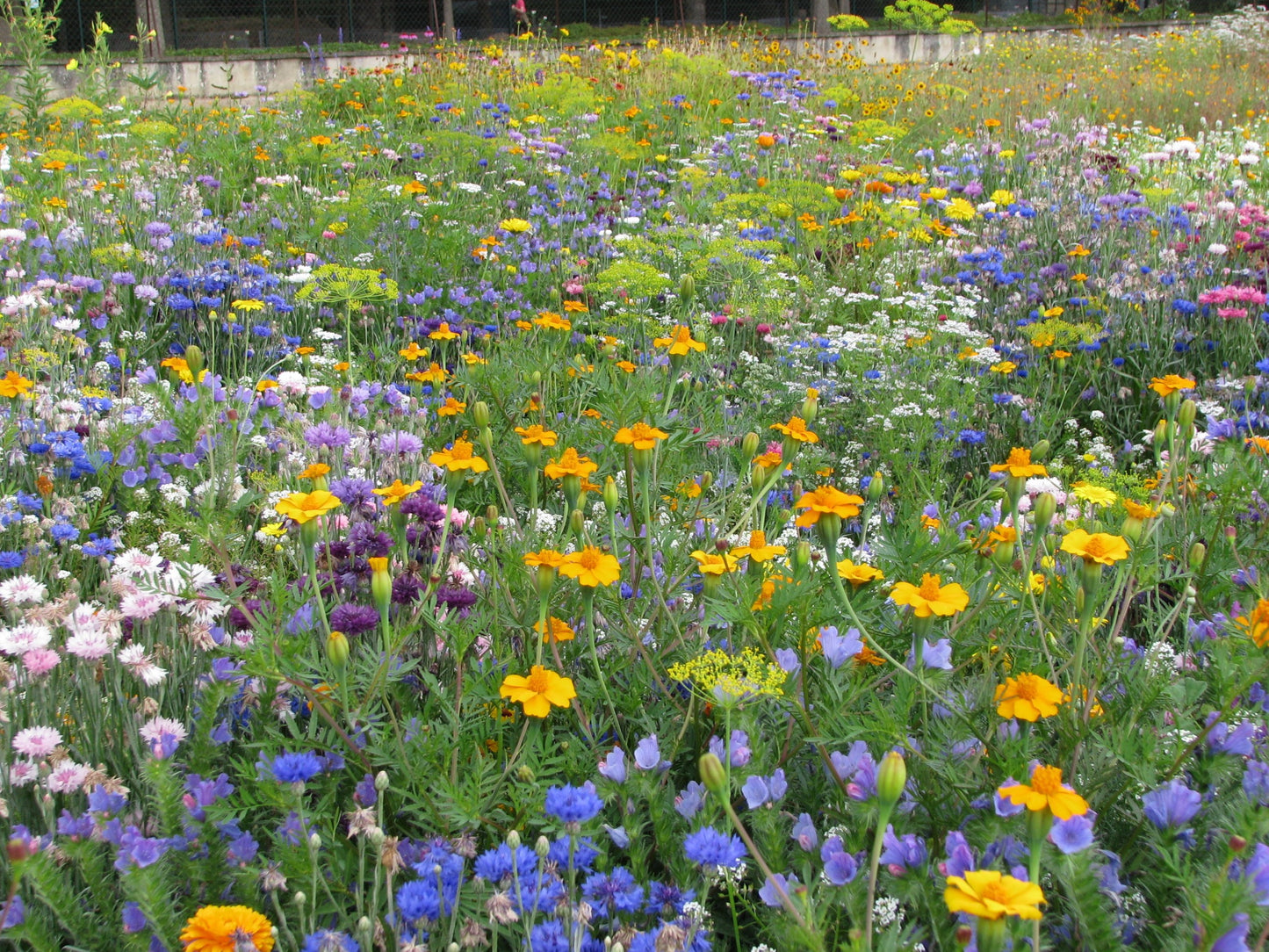My Store
Bramley & Sage Throw to Grow – Flowers for Beneficial Insects Seeds
Bramley & Sage Throw to Grow – Flowers for Beneficial Insects Seeds
Couldn't load pickup availability
Create a thriving ecosystem in your garden with our Flowers for Beneficial Insects Seed Mix. Specially curated to attract pollinators like bees, butterflies, and other beneficial insects, this vibrant mix of flowers is the perfect addition to any eco-friendly garden. By encouraging natural predators of pests and supporting pollination, this mix helps promote healthier plants and bountiful harvests—all while adding bursts of colour to your outdoor space.
Throw to Grow seeds are best sown between the end of April to beginning of June, they grow best when the soil is sufficiently warm and moist for the seeds to germinate well. Ideal for new gardeners and experts alike, these seeds require significantly less maintenance than bedding flowers with fertilisers and pest control not necessary and a low water demand.
This seed mix not only beautifies your garden with a vibrant array of blooms but also plays a crucial role in supporting biodiversity. By attracting helpful insects, it naturally balances your garden’s ecosystem, reduces pests, and boosts pollination for healthier plants. It’s a win-win for gardeners who value sustainability and organic practices.
SOW: These wildflower mixes are best sown directly into your garden or seed bed. In many regions, you can sow them in early spring (March–April) once the soil is workable. Alternatively, many gardeners sow them in autumn (September–October) so that winter conditions help stratify the seeds and they bloom the following season. Scatter seeds over prepared soil and gently rake in for even distribution.
LIGHT: Full sun to partial shade for best flowering results. These wildflowers thrive with at least 6–8 hours of direct sunlight daily. Full sun maximizes flowering and helps attract beneficial insects such as bees, hoverflies, and ladybirds.
WATERING: Water regularly (lightly every 2–3 days) until the seeds germinate and the seedlings are well established. Once established, many of these wildflowers are quite drought tolerant. Water during prolonged dry spells but avoid overwatering—good drainage is key.
SOIL: Use a well-draining, moderately fertile soil such as a sandy-loam or even poorer soils that mimic natural wildflower meadows. Adding a small amount of organic matter can help with germination, but these species typically thrive in low-nutrient conditions which help keep aggressive weeds at bay.
PLANT SIZE: Because the mix contains a variety of species, mature plant heights will vary. Expect low-growing ground covers to reach around 15–20 cm, while taller species may grow up to 60 cm or more. The diversity in height and form is part of what makes these mixes attractive for garden ecology.
Share






